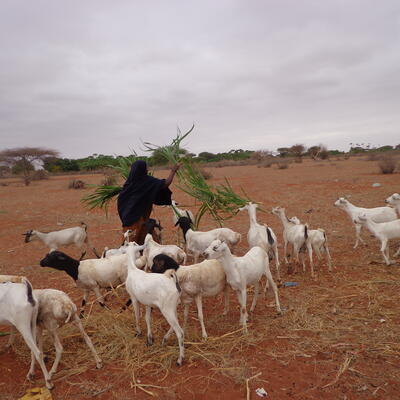
Lancet article highlights ILRI's work putting One Health principles into practice in Kenya
A new article about One Health in Kenya was recently published in The Lancet on January 21. Written by Laura Salm-Reifferschedit, it demonstrates how Kenya is putting One Health principles into practice on the ground and highlights recent work conducted by ILRI scientists, jointly with national partners and research collaborators.
The need to better understand infectious diseases in Kenya is underscored by a recent WHO analysis showing that in Africa, the number of outbreaks caused by zoonotic pathogens like monkeypox, Ebola and anthrax was 63 per cent higher between 2012 and 2022 than in the previous decade.
As Salm-Reifferschedit notes, the zoonotic disease landscape is uniquely challenging in Kenya. The Horn of Africa is experiencing its worst drought in the last 40 years, worsening already poor agricultural conditions, displacing hundreds of thousands of people and leading to food insecurity, malnutrition and death. As Kenya becomes dryer, livestock and wild animals are increasingly concentrated in select areas where water and pasture can still be found. The resulting interactions between livestock herds and wild animals influence the transmission of pathogens and increase the risk of zoonotic disease emergence.
At the same time, Kenya's population is overgrowing and by 2050, over half of the country's population will live in urban areas where zoonotic diseases can spread more quickly. Eric Fèvre, an ILRI scientist jointly appointed with the University of Liverpool (UK), notes that 'more people are needing more food, and a change in the climate results in the food-producing areas of the country being squashed into relatively smaller and smaller places'.
Kenya's efforts to adapt to these changes present further challenges. Drought and desertification have caused more farmers to keep camels, many of which have antibodies against MERS-CoV. 'We have a situation where this domestic animal population, which is carrying a virus which is potentially human infective, is being moved around for the market and is potentially connecting an extensive range of people', says Fèvre. 'That gives a snapshot of how larger-scale climatological change, changes in market demand and other things come together to mean nowhere is really far from anywhere from the perspective of a pathogen'.
Fortunately, various local and national efforts are addressing these growing challenges. ILRI is conducting a year-long study in Isiolo County to determine the prevalence of brucellosis, Q fever and Rift Valley fever. At the national level, Kenya's Zoonotic Disease Unit is developing policies and federal guidelines for controlling zoonotic diseases and supporting disease surveillance and outbreak responses.
ILRI is also establishing a One Health coordination mechanism funded by the German Federal Ministry for Economic Cooperation and Development under the One Health Research, Education and Outreach Centre in Africa (OHRECA). By facilitating collaboration between the animal, human and environmental health sectors, warning signals can be shared across county and country boundaries to ensure precautionary measures are taken to prevent outbreaks before they arise.
As Fèvre says, zoonotic diseases and One Health are currently 'riding a wave of interest because of COVID'. Moving forward, holistic, long-term thinking and sustained research funding are necessary to address emergent and evolving challenges.
Abukar Muhammed and her camels. Photo by Anna Ridout/Oxfam.



















